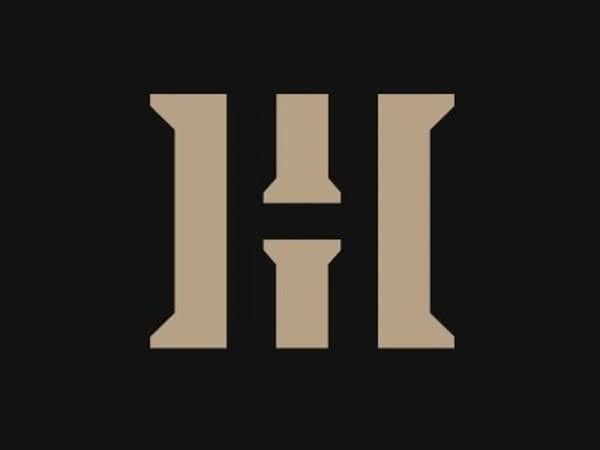위키 구독하기
Share wiki
Bookmark
Hector Network
Hector Network
**헥터 네트워크(Hector Network)**는 분산형 자율 조직(DAO)이자 블록체인 생태계로, HEC 유틸리티 토큰과 보완적인 스테이블코인 토큰인 TOR으로 구성되었습니다. [1][2]
2023년 7월, 헥터 네트워크 커뮤니티는 프로젝트가 약 800만 달러 상당의 암호화폐 자산을 잃었다는 보고 이후 청산 모드로 전환하는 투표를 진행했습니다. 이 손실은 암호화폐 브릿지 프로토콜인 멀티체인(Multichain)의 트레저리에서 자금이 인출되면서 발생했습니다. [6]
개요
헥터 네트워크는 Web3 솔루션과 크로스체인 확장에 중점을 두었습니다. 헥터 네트워크 생태계 내 프로젝트는 DeFi 서비스 및 플랫폼, 암호화폐 게임, NFT 마켓플레이스, DEX, 스테이킹 및 하이퍼 스테이킹, 분산형 채권, 거버넌스 등 다양한 분야를 포함했습니다. [3]
헥터 네트워크는 팬텀(Fantom) 오페라 체인 생태계를 기반으로 구축되었습니다. 팬텀과 마찬가지로 오페라 체인의 방향성 비순환 그래프(DAG)를 사용했으며, 이는 팬텀의 Lachesis 비동기 비잔틴 장애 허용(aBFT) 합의 알고리즘을 활용했습니다. 헥터 네트워크는 팬텀 오페라 체인과의 통합을 통해 이더리움 가상 머신(EVM), 스마트 계약, 그리고 Solidity 및 Vyper와 같은 스마트 계약 언어와 호환되었습니다. 이를 통해 다양한 EVM 호환 체인에서 다양한 Web3 애플리케이션과 통합할 수 있었습니다. [3][4]
헥터 네트워크는 보루시아 도르트문트 축구 클럽(Borussia Dortmund Football Club)과 바이낸스 스마트 체인(Binance Smart Chain)과 파트너십을 맺고 멀티체인 생태계를 개척했습니다. [10]
역사
2021년 말, 팬텀(Fantom) 재단은 인센티브 지원금을 통해 팬텀 오페라 체인의 성장을 촉진하는 계획을 시작했습니다. 이 프로그램은 거버넌스 합의에 따라 팬텀 생태계 내 프로젝트에 자금을 지원했습니다. 2022년 1월, 헥터 네트워크는 인센티브 지원금 프로그램의 3단계 프로젝트가 되었습니다. [3]
헥터 네트워크는 지원금을 사용하여 TOR 스테이블코인에 대한 보상을 개발하고 개선했습니다. 완전 담보 스테이블코인인 TOR은 헥터의 자매 네트워크 역할을 합니다. TOR 코인이 발행될 때마다 HEC 토큰 가격에 긍정적인 영향을 미쳐 헥터 네트워크의 디플레이션 토큰 경제학에 기여합니다. [2][3]
기술
헥터 네트워크는 팬텀의 Lachesis aBFT 합의 메커니즘을 사용하여 트랜잭션을 검증하고 체인의 보안을 유지했습니다. 비잔틴 장애 허용(BFT)의 독특한 구현 방식인 Lachesis는 높은 처리량, 빠른 최종성 및 은행 수준의 보안이 필요한 애플리케이션을 위해 설계되었습니다. [3]
헥터 네트워크의 검증자는 지분 증명(Proof of Stake) aBFT 합의 방식으로 운영되어 필요한 해싱 알고리즘을 실행하고 유효한 트랜잭션을 체인의 불변 레저에 추가하는 검증자에게 보상을 제공했습니다. 팬텀의 오페라 체인에서 검증자를 운영하는 헥터 네트워크는 트랜잭션 수수료(가스)를 통해 트랜잭션의 보안을 유지하고 수익을 창출했습니다.
또한, 헥터 네트워크는 스테이킹 및 본딩 시스템을 사용했습니다. 스테이킹은 네트워크와 HEC 토큰의 보안을 위해 사용되었으며, 사용자는 암호화폐를 스테이킹할 때 HEC로 APR 또는 APY를 얻었습니다. 헥터 네트워크의 본딩은 트레저리 자금을 조달하는 데 사용되었으며, 사용자는 특정 코인을 제공하는 대가로 프로젝트에서 직접 할인된 토큰을 구매할 수 있는 기회를 얻었습니다. 본딩 보상은 sHEC로 지급되었으며, 토큰은 완전히 상환된 후 스테이킹할 수 있었습니다. [4]
헥터 토큰(HEC)
HEC 토큰은 헥터 네트워크의 주요 유틸리티 토큰이며, TOR 스테이블코인과 함께 작동합니다. 세계 최초의 비희석 리베이스 토큰인 HEC는 거버넌스, 스테이킹, 본딩, 토큰 발행 (TOR 토큰), NFT, 자산 래핑 및 헥터 DEX에서의 거래에 사용됩니다. 이를 통해 HEC 보유자는 토큰의 유틸리티나 가치를 희석하지 않고 네트워크에 참여할 수 있습니다. [5]
TOR는 헥터 연구소 트레저리에 USDC와 DAI로 담보된 스테이블코인이며, 이중 보안 계층을 통해 안정성을 유지했습니다. 팬텀 오페라 체인에 기반한 TOR은 크로스체인 트랜잭션 및 자산 이전을 용이하게 했습니다. ERC-20 토큰인 TOR은 TOR 유동성 풀에 의해 결정된 조건에 따라 발행 또는 상환되었으며, HEC 토큰 경제학의 디플레이션과 희석 방지를 위해 설계되었습니다. [3]
토큰 경제학
커뮤니티 거버넌스를 통해 헥터 네트워크 커뮤니티는 HEC 토큰에 대한 고정 공급량 상한선을 설정하기로 결정했습니다. 이는 토큰 발행을 신중하게 관리하여 상한 공급량을 유지하면서 APY에 대한 전략적 조정을 허용하는 배출 계획을 채택하는 것을 포함했습니다. [3]
잘못된 내용이 있나요?
